Apoptosis-inducing factor: structure, function, and redox regulation
- PMID: 20868295
- PMCID: PMC3096518
- DOI: 10.1089/ars.2010.3445
Apoptosis-inducing factor: structure, function, and redox regulation
Abstract
Apoptosis-inducing factor (AIF) is a flavin adenine dinucleotide-containing, NADH-dependent oxidoreductase residing in the mitochondrial intermembrane space whose specific enzymatic activity remains unknown. Upon an apoptotic insult, AIF undergoes proteolysis and translocates to the nucleus, where it triggers chromatin condensation and large-scale DNA degradation in a caspase-independent manner. Besides playing a key role in execution of caspase-independent cell death, AIF has emerged as a protein critical for cell survival. Analysis of in vivo phenotypes associated with AIF deficiency and defects, and identification of its mitochondrial, cytoplasmic, and nuclear partners revealed the complexity and multilevel regulation of AIF-mediated signal transduction and suggested an important role of AIF in the maintenance of mitochondrial morphology and energy metabolism. The redox activity of AIF is essential for optimal oxidative phosphorylation. Additionally, the protein is proposed to regulate the respiratory chain indirectly, through assembly and/or stabilization of complexes I and III. This review discusses accumulated data with respect to the AIF structure and outlines evidence that supports the prevalent mechanistic view on the apoptogenic actions of the flavoprotein, as well as the emerging concept of AIF as a redox sensor capable of linking NAD(H)-dependent metabolic pathways to apoptosis.
Figures









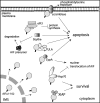
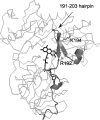

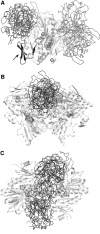
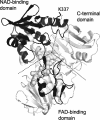


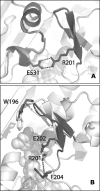

Similar articles
-
The oxido-reductase activity of the apoptosis inducing factor: a promising pharmacological tool?Curr Pharm Des. 2013;19(14):2628-36. doi: 10.2174/1381612811319140012. Curr Pharm Des. 2013. PMID: 23116400 Review.
-
Redox-linked conformational dynamics in apoptosis-inducing factor.J Mol Biol. 2009 Jul 31;390(5):924-38. doi: 10.1016/j.jmb.2009.05.013. Epub 2009 May 15. J Mol Biol. 2009. PMID: 19447115 Free PMC article.
-
Redox-dependent changes in molecular properties of mitochondrial apoptosis-inducing factor.J Biol Chem. 2008 Feb 29;283(9):5622-31. doi: 10.1074/jbc.M709147200. Epub 2007 Dec 31. J Biol Chem. 2008. PMID: 18167347
-
Severe X-linked mitochondrial encephalomyopathy associated with a mutation in apoptosis-inducing factor.Am J Hum Genet. 2010 Apr 9;86(4):639-49. doi: 10.1016/j.ajhg.2010.03.002. Epub 2010 Apr 1. Am J Hum Genet. 2010. PMID: 20362274 Free PMC article.
-
Therapeutic potential of AIF-mediated caspase-independent programmed cell death.Drug Resist Updat. 2007 Dec;10(6):235-55. doi: 10.1016/j.drup.2007.11.001. Epub 2008 Jan 3. Drug Resist Updat. 2007. PMID: 18180198 Review.
Cited by
-
Role of apoptosis-inducing factor, proline dehydrogenase, and NADPH oxidase in apoptosis and oxidative stress.Cell Health Cytoskelet. 2012 Feb 1;2012(4):11-27. doi: 10.2147/CHC.S4955. Cell Health Cytoskelet. 2012. PMID: 22593641 Free PMC article.
-
Prognostic Value of Apoptosis-Inducing Factor (AIF) in Germ Cell Tumors.Cancers (Basel). 2021 Feb 13;13(4):776. doi: 10.3390/cancers13040776. Cancers (Basel). 2021. PMID: 33668443 Free PMC article.
-
PAK5-mediated AIF phosphorylation inhibits its nuclear translocation and promotes breast cancer tumorigenesis.Int J Biol Sci. 2021 Mar 27;17(5):1315-1327. doi: 10.7150/ijbs.58102. eCollection 2021. Int J Biol Sci. 2021. PMID: 33867848 Free PMC article.
-
A literature review of microRNA and gene signaling pathways involved in the apoptosis pathway of lung cancer.Respir Res. 2023 Feb 17;24(1):55. doi: 10.1186/s12931-023-02366-w. Respir Res. 2023. PMID: 36800962 Free PMC article. Review.
-
Aminoglycosides rapidly inhibit NAD(P)H metabolism increasing reactive oxygen species and cochlear cell demise.J Biomed Opt. 2018 Nov;24(5):1-14. doi: 10.1117/1.JBO.24.5.051403. J Biomed Opt. 2018. PMID: 30411553 Free PMC article.
References
Publication types
MeSH terms
Substances
LinkOut - more resources
Full Text Sources
Other Literature Sources

